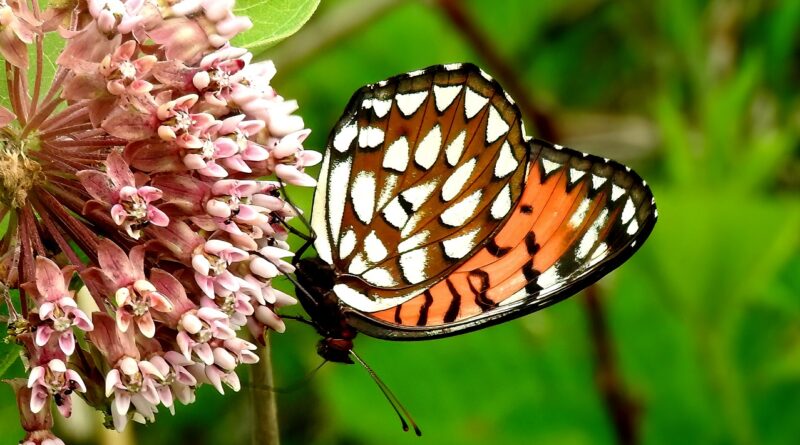Return of the Butterfly Whisperer
Podcast: Play in new window | Download (Duration: 2:04:35 — 59.4MB)
Subscribe: Apple Podcasts | Spotify | Android | iHeartRadio | Podchaser | Email | TuneIn | RSS | More
(July 11, 2021) Doug Taron, PhD, is Chief Curator of the Chicago Academy of Sciences. If you’re in Chicago, you probably you know that institution better as the Peggy Notebaert Nature Museum. He is also director of the Illinois Butterfly Monitoring Network. We also call him The Butterfly Whisperer. I suppose we could also add Dragonfly Whisperer. And probably several other insects.
In fact, when he was on our show exactly a year ago, he was pretty excited about another insect. A wet spring (remember those?) encouraged an explosion of fireflies. (BTW, the Xerces Society recently published a study about the status of North American fireflies.) And helped me identify another insect, which was feeding on a milkweed plant in my backyard. You can see the video here. Taron said it was a Nessus Sphinx Moth (Amphion floridensis).
This year, I shot video of a different insect on my milkweed. You can watch it, along with Taron’s commentary, here. Unfortunately, this insect is not as benign as a Nessus Sphinx Moth. Taron informed me that I had shot video of an adult squash vine borer. (You know an insect is trouble when it is named for its larval stage.) So, does that make Taron the Squash Vine Borer Whisperer, too? Nah. He just knows his insects.
Regal fritillaries, monarchs and more
In his role as The Butterfly Whisperer, Taron just returned from a trip to north central Illinois to scout for regal fritillaries (Speyeria idalia). His destination was Pembroke Township in the Kankakee region. There, regal fritillaries still abound. The Peggy Notebaert Nature museum notes that the butterfly is currently listed as threatened in Illinois. In fact, the fritillary is found in less than 5% of its historic range within the Chicago Wilderness Region. However, Taron says he saw “tons” of the insect, including the one pictured at the top of this post.
But butterfly and insect decline in general are a continuing concern. In just the past year, the Western monarch population crashed. The Eastern monarchs could follow.

“The monarch migration is over in the West,” says Chip Taylor, director of Monarch Watch and a University of Kansas professor who has devoted his life to the study and protection of these butterflies. “It’s done.”
The Eastern population—the one that migrates from as far north as Canada via the US midwest and Eastern Seaboard to Mexico each year— is currently struggling, albeit not to the extent of the Western population. Where the Eastern monarchs blanketed over 18 hectares in their Michoacan highlands retreats in the late 1990s, this past winter they occupied just over two hectares—representing a 90 percent decline in the past three decades and a significant fall from their nearly three hectares last year.
So much we don’t know
The Sierra story quoted above lists three major factors in butterfly decline: climate change, pesticides and habitat loss. Surprise! They’re all caused by humans! Another entomologist has been watching butterflies and moths for fifty years. He sounds an alarm about their disappearance.
“In the last 50 years, our moth and butterfly populations have declined by more than 80 percent,” writes Josef H. Reichholf, an entomologist who recently penned a book, “The Disappearance of Butterflies.” “Perhaps only older people will recall a time when meadows were filled with colorful flowers and countless butterflies fluttered above.”
Is there anything we can do to stem the tide? Should we plant milkweed? Well, yes…but it needs to be the right kind of milkweed. And, sometimes, we just don’t know why insects–including monarchs–do what they do. That’s why we invite experts like The Butterfly Whisperer Doug Taron to talk to us. When he joined us last year, we gave him a total of 12 minutes to speak. However, we’re no longer constrained by radio “clocks.” He gets the entire first hour on today’s show. You will want to tune in. We might even talk about estivating butterflies. Oooh!


